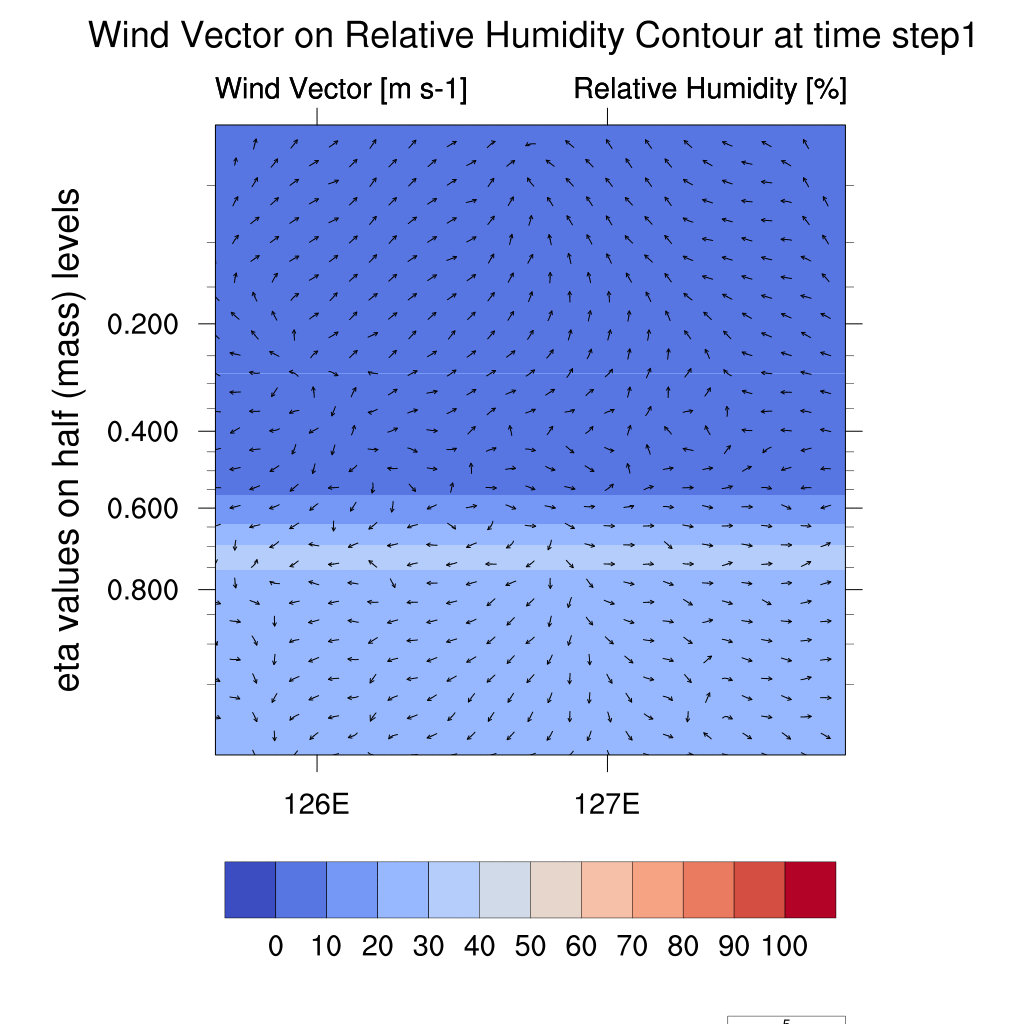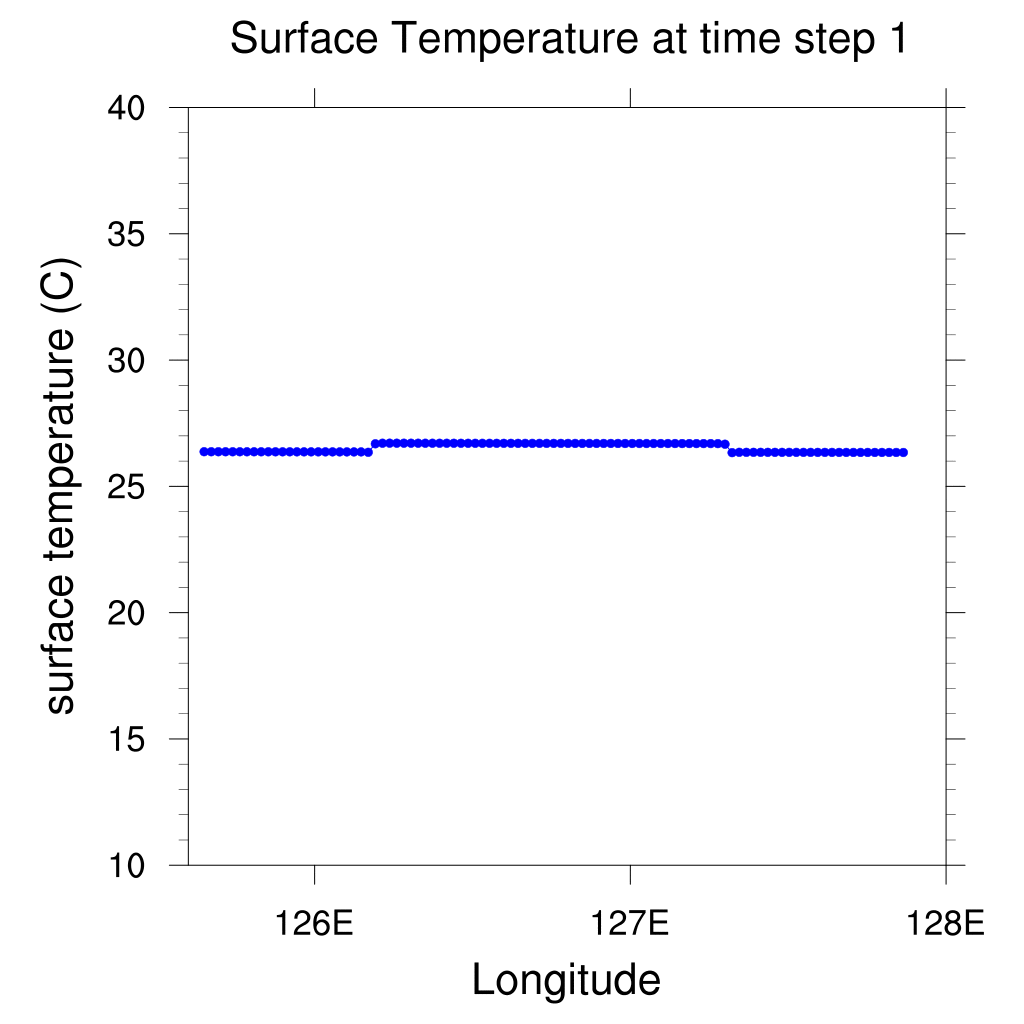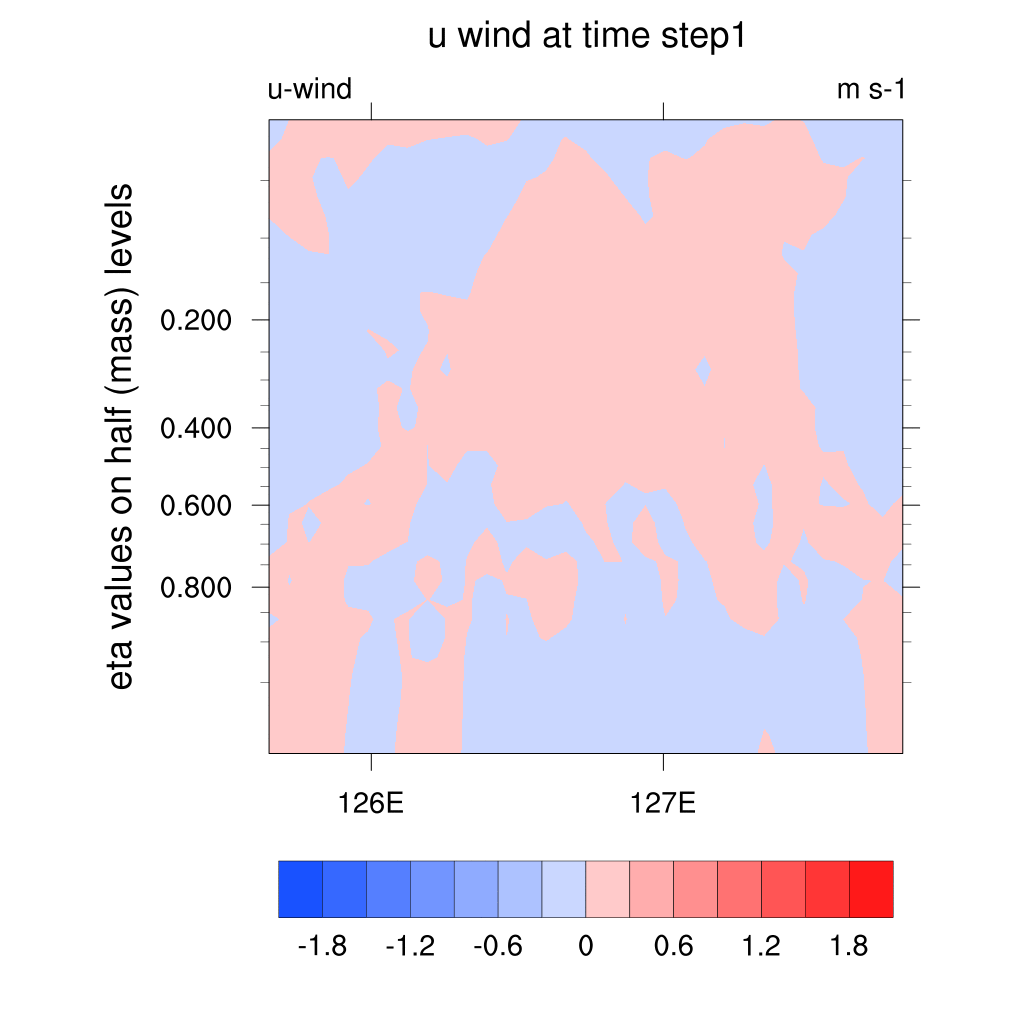top of page
: Focused on temperature and humidity change
1. Temperature Contour Analysis
T = 288K

The temperature difference between the urban and the rural area is not large, but at night the city seems warmer than the rural.
However, if you look closely, unlike other cases where the entire city is warm, the warm areas of the urban are divided into several areas and the temperature distribution is also different.
T = 298K (default)

During the daytime, temperatures in the urban and the rural are similar, but at nighttime, temperatures in the urban are higher than in the rural area.
T = 308K

It appears similar to default, and the urban heat island effect is particularly noticeable at dawn. And the air above the ground cools down later than in other cases, and the surface temperature cools down quickly.
2. Relative Humidity Analysis
T = 288K
T = 298K (default)
T = 308K


Relative humidity is generally high throughout the troposphere. This is because the overall temperature of the atmosphere has decreased while the amount of water vapor remains the same. In rural areas, cooling occurs overnight through plant evaporation; however, due to high relative humidity, evaporation is limited. As a result, the temperature difference between urban and rural areas is not significant, and humidity remains high due to the still elevated temperatures.
At night, relative humidity decreases in the surface of the urban but increases in the upper layers of the urban. This happens because warm air in the urban rises, creating a low-pressure area. As a result, water vapor and wind from the rural areas move toward the city. When this converging air rises, water vapor also moves upward, accumulating in the upper layers and increasing humidity there

When the temperature is high, the saturation vapor content increases, resulting in lower relative humidity throughout the troposphere. During the day, the surface temperature in urban areas is higher than in surrounding areas, so relative humidity appears higher only in the surface areas outside the city.
3. Surface Temperature Analysis
T = 288K
T = 298K (default)
T = 308K



Due to the heat island effect, high surface temperatures occur in patches across both urban and rural areas. Around dawn, the central area of the urban can sometimes be cooler than rural area parts, and only specific zones in the city show significant temperature changes.
During the day, both urban and rural areas absorb solar energy, resulting in minimal temperature differences. However, at night, radiative cooling lowers surface temperatures, and in rural areas, plants further promote cooling through evaporation. In urban areas, however, materials like asphalt and roads have high thermal capacity, absorbing large amounts of energy during the day. Additionally, pollutants in the air slow down radiative cooling, causing urban temperatures to decrease more slowly. This nighttime urban heat island effect arises from differences in cooling rates between the city and its surroundings.
It appears similar to default, but the temperature rises.
It is clearly evident that the temperature in the urban at night is higher than in the outskirts.
4. U- wind Analysis
T = 288K
T = 298K (default)
T = 308K

The u-wind blows irregularly without any distinct patterns, converging toward scattered heat islands. Around dawn, the u-wind distinctly converges into several areas.


As temperatures rise, surface temperature differences during the day decrease, which in turn reduces the wind speeds that blow into urban.
So during the daytime, the wind speed is lower than default(298K) and at night time it is similarly strong.
In the early morning, due to the urban heat island effect, lower-level air in urban areas rises. This causes winds from rural areas to converge into the urban. As the daytime, the temperature difference between urban and rural surfaces decreases. This reduces the convergence of u-winds toward urban areas. During the day, the air temperature in urban remains higher than in rural areas. This creates a pressure gradient, leading to a pressure gradient force (PGF) that pushes urban air outward toward rural areas. At nighttime, while rural areas cool down, curban retain heat and stay warmer. This causes the air to rise, drawing rural air back into urban areas.
bottom of page